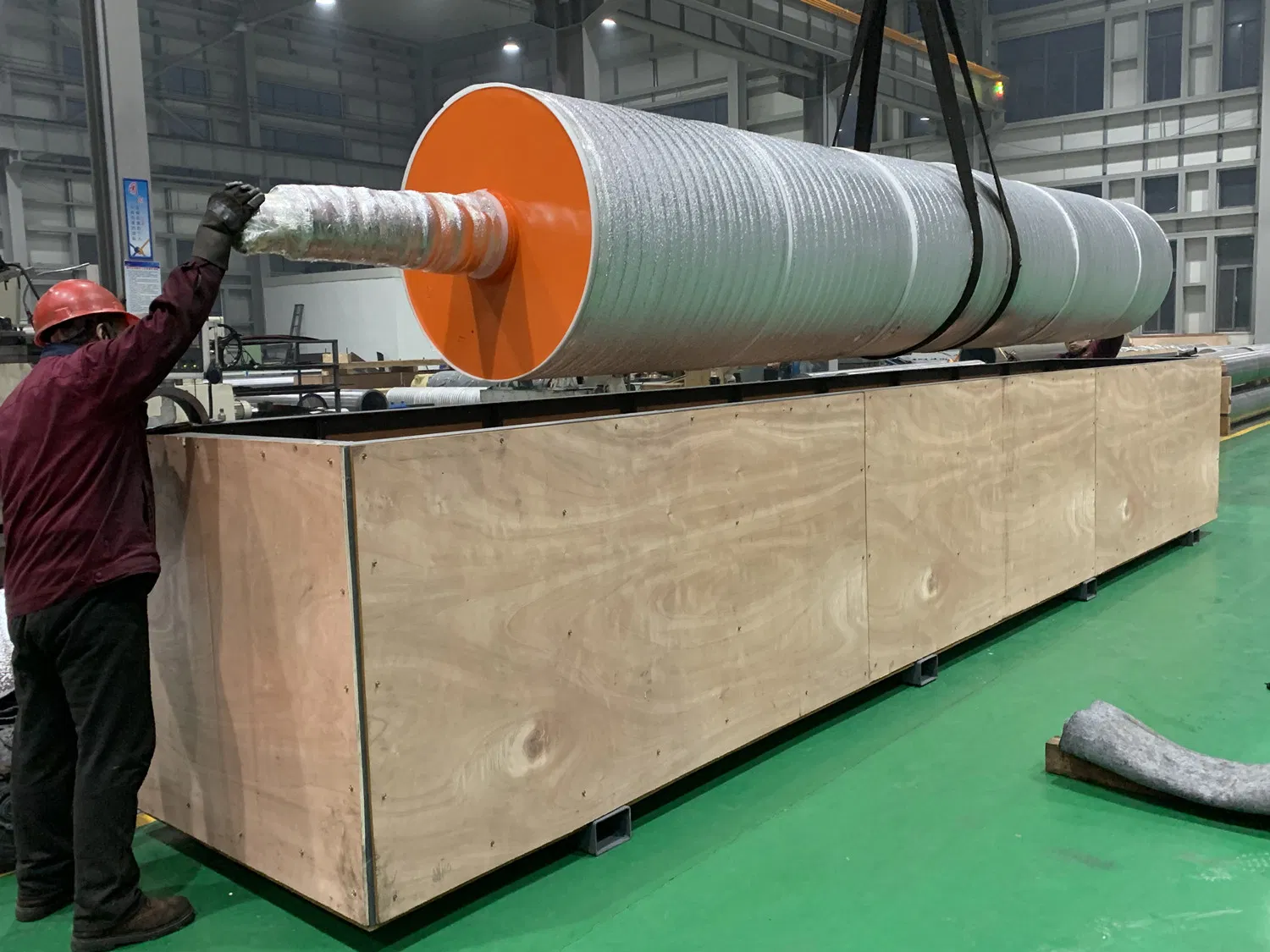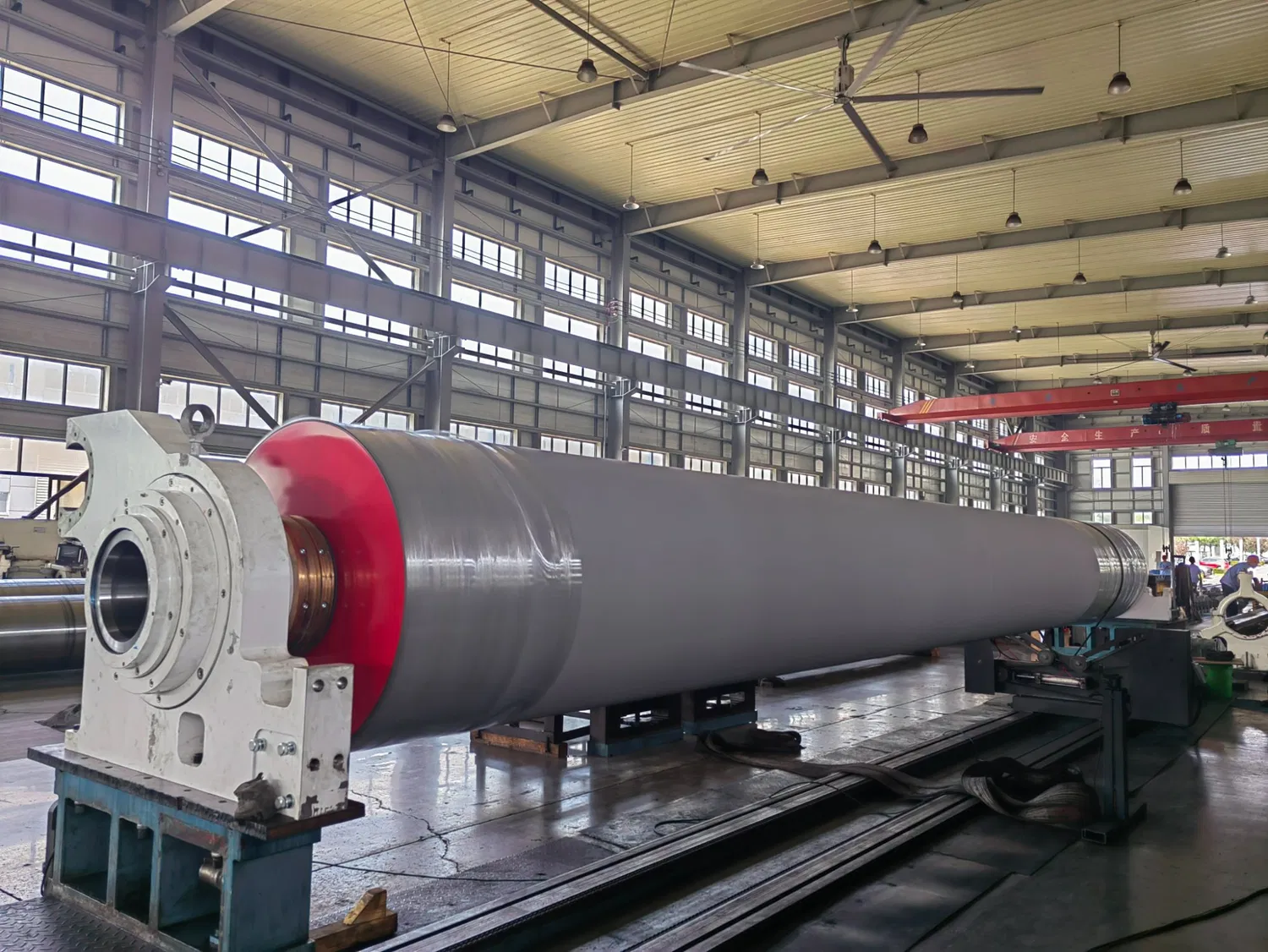In the relentless world of paper manufacturing, every component plays a critical role in efficiency and product quality. Among these, paper machine rolls stand as unsung heroes, constantly under immense pressure, heat, and abrasive conditions. While much attention is rightly paid to the bearings—the literal linchpins of rotation—an engineer's true mastery of roll longevity extends far, far beyond these crucial components. To be honest, focusing solely on bearings is like trying to win a marathon by only lacing up your shoes; it's essential, but it's just one part of a much larger, more complex strategy.
This guide delves into the multifaceted approach required to truly maximize paper machine roll lifespan, exploring the often-overlooked yet profoundly impactful elements that dictate a roll's operational life. It’s about understanding the holistic ecosystem surrounding these vital components, from material science to operational nuances, and everything in between. In my experience, a comprehensive strategy is the only path to sustained performance and reduced downtime.
The Foundational Pillars: Material Science and Roll Design for Endurance
The journey to a longer roll lifespan begins long before installation, deep within the realm of material science and design. Interestingly enough, the very composition and architecture of a roll dictate its inherent resistance to wear, corrosion, and fatigue. This is a fundamental aspect that goes well "beyond the bearings."
Selecting the Right Core and Shell Materials
The core material of a roll, often steel or cast iron, must possess specific properties to withstand the dynamic stresses of a paper machine. Factors like tensile strength, fatigue resistance, and thermal stability are paramount. For instance, in high-load or high-speed applications, engineers might opt for specialized alloys that offer superior strength-to-weight ratios and enhanced damping characteristics. Similarly, the shell material, which directly interacts with the paper web and process chemicals, requires careful consideration. Is it a press roll, a dryer roll, or a calendar roll? Each demands a unique set of material properties to resist specific forms of degradation.
The Art of Roll Coverings and Coatings
Perhaps one of the most impactful elements "beyond the bearings" is the roll covering or coating. These external layers are the first line of defense against wear, abrasion, chemical attack, and heat. They also play a crucial role in paper quality and dewatering efficiency. Modern coverings range from specialized rubber compounds to advanced polymer composites and ceramic coatings. Each offers distinct advantages:
- Rubber Covers: Excellent for grip, resilience, and often used in wet sections due to their dewatering properties and ability to spread nip pressure evenly. Their hardness and elasticity are critical parameters.
- Polymer Composites: Offer superior wear resistance, chemical inertness, and often higher temperature capabilities than traditional rubber. They can be engineered for specific surface properties.
- Ceramic Coatings: Applied for extreme hardness, abrasion resistance, and thermal stability, particularly in dryer sections or areas prone to high wear.
The choice of covering significantly influences the roll's ability to resist damage from foreign objects, reduce sticking, and maintain consistent surface properties over time, directly contributing to its lifespan.
Precision in Motion: The Criticality of Alignment and Balance
Even the most robust roll, equipped with the finest bearings, will succumb prematurely if it's not operating with pinpoint precision. This is where the engineer's keen eye for alignment and balance truly shines, extending far "beyond the bearings" themselves to the entire rotational system.
The Imperative of Proper Alignment
Misalignment is a silent killer of paper machine rolls. It introduces uneven loading, excessive stress on the roll body, and can lead to localized wear patterns that accelerate degradation. Think of it this way: if a car's wheels are out of alignment, the tires wear out unevenly and quickly, even if the bearings are perfect. The same principle applies here. Proper alignment ensures that the roll operates on its true axis, distributing loads uniformly across its face and into its bearings. This minimizes:
- Edge Wear: Uneven pressure across the roll face.
- Fatigue: Localized stress concentrations that lead to cracking.
- Vibration: Which can propagate throughout the machine, affecting other components.
Regular alignment checks, often using laser alignment tools, are not just good practice; they are indispensable for maximizing roll lifespan.
Dynamic Balancing: Mitigating Vibrational Forces
Unbalance in a rotating roll generates centrifugal forces that lead to vibration. These vibrations, even if subtle, can be incredibly destructive over time. They cause fatigue in the roll body, accelerate wear on bearings (even if the bearings themselves are new), and can negatively impact paper quality. Dynamic balancing, performed both in the shop and sometimes in situ, ensures that the mass distribution of the roll is uniform around its axis of rotation. This process is crucial for high-speed rolls where even minor imbalances can generate significant forces. Many experts agree that investing in meticulous balancing pays dividends in extended roll life and reduced overall machine stress.

Surface Deep: Optimizing Roll Covers and Surface Integrity
While we touched on roll coverings earlier, their ongoing management and maintenance are critical "beyond the bearings" for sustained performance and longevity. The surface of a paper machine roll is its interface with the product and the process; its integrity directly impacts both paper quality and the roll's own durability.
Grinding and Resurfacing Strategies
Roll surfaces inevitably wear, develop profiles, or suffer damage over time. Regular grinding and resurfacing are essential maintenance practices that restore the roll's original geometry and surface finish. This isn't just about aesthetics; it's about maintaining consistent nip pressure, preventing sheet breaks, and ensuring uniform dewatering or drying. The frequency and precision of grinding depend on the roll type, its position in the machine, and the specific wear patterns observed. It's worth noting that improper grinding can do more harm than good, introducing new stresses or surface imperfections.
Preventing and Managing Surface Damage
Roll surfaces are susceptible to various forms of damage, from nicks and dents caused by foreign objects to chemical degradation and thermal cracking. Proactive measures include:
- Foreign Object Detection: Implementing systems to detect and remove tramp metal or debris before it enters the nip.
- Chemical Compatibility: Ensuring that process chemicals are compatible with the roll cover material to prevent chemical attack.
- Temperature Control: Managing roll surface temperatures to prevent thermal shock or overheating, which can degrade covers.
- Cleaning Regimes: Regular and appropriate cleaning to prevent build-up of contaminants that can cause localized wear or sticking.
Rapid response to any surface damage, through patching or immediate resurfacing, can prevent minor issues from escalating into catastrophic failures, thereby extending the roll's operational life significantly.
Proactive Preservation: Advanced Monitoring and Maintenance Strategies
An engineer's guide to maximizing roll lifespan wouldn't be complete without a deep dive into proactive monitoring and maintenance. This moves us firmly "beyond the bearings" to encompass the entire health of the roll system, leveraging technology and smart practices to predict and prevent failures.
Condition Monitoring Techniques
Modern paper mills employ a suite of condition monitoring techniques to assess the health of rolls in real-time or during scheduled shutdowns. These techniques provide invaluable insights, allowing for predictive maintenance rather than reactive repairs:
- Vibration Analysis: While often associated with bearings, vibration analysis can also detect issues like roll unbalance, misalignment, or even internal defects in the roll body or cover. Changes in vibration signatures can indicate developing problems long before they become critical.
- Thermal Imaging (Thermography): Hot spots on a roll surface or within its internal structure can indicate uneven pressure, friction, or internal defects. Thermography provides a non-contact method to identify these thermal anomalies.
- Acoustic Emission: Listening for subtle sounds that indicate material fatigue, cracking, or other internal damage.
- Ultrasonic Testing: Used to detect internal flaws, cracks, or delamination within the roll body or cover, especially during planned outages.
- Online Profile Measurement: Continuously monitoring the roll's diameter and profile to detect wear or deformation in real-time, allowing for timely grinding schedules.
Lubrication Management (Beyond Bearings)
While bearing lubrication is paramount, the broader lubrication management for other roll components, such as internal mechanisms in suction rolls or doctor blades, also contributes to overall roll health. Ensuring the right lubricant, at the right quantity, at the right time, for *all* moving parts associated with the roll, is crucial. This includes seals, gears, and other interfaces that might not be part of the main bearing assembly but are vital for smooth operation.

Operational Excellence: Process Optimization for Roll Durability
The way a paper machine is operated has a profound impact on the longevity of its rolls. This aspect of an engineer's guide transcends individual components and focuses on the interplay of process parameters, directly influencing roll wear and stress "beyond the bearings."
Optimizing Operating Parameters
Every roll has an optimal operating window. Running a machine outside these parameters can significantly shorten roll life. This includes:
- Nip Pressure Control: Excessive or uneven nip pressure can lead to accelerated wear, localized heating, and even roll deformation. Precise control and monitoring of nip pressures are essential.
- Temperature Management: Maintaining consistent and appropriate temperatures across dryer rolls prevents thermal shock and ensures uniform drying, reducing stress on the roll body and cover.
- Speed Synchronization: Ensuring all rolls in a section are perfectly synchronized in speed prevents slippage and scuffing, which can rapidly degrade roll surfaces.
- Web Tension Control: Proper web tension prevents undue stress on the rolls and reduces the likelihood of sheet breaks that can cause impact damage.
Minimizing Start-up and Shut-down Stresses
Many failures occur during transient conditions like start-ups and shut-downs. Rapid temperature changes, sudden accelerations or decelerations, and improper sequencing can induce significant stress on rolls. Implementing controlled start-up and shut-down procedures, including gradual heating and cooling, and careful speed ramps, can greatly mitigate these stresses and extend roll life. In my experience, this is often an overlooked area where significant gains in longevity can be made.
The Future of Roll Care: Embracing Innovation and Continuous Improvement
The field of paper machine roll technology is constantly evolving. An engineer's guide to maximizing lifespan must look forward, embracing new technologies and a culture of continuous improvement. This forward-thinking approach is truly "beyond the bearings" in its scope.
Advanced Materials and Smart Rolls
Research into new roll cover materials, including self-healing polymers and advanced composites with embedded sensors, promises even greater durability and predictive capabilities. The concept of "smart rolls" with integrated sensors for real-time monitoring of temperature, pressure, and vibration directly within the roll body is becoming a reality. These innovations will provide unprecedented insights into roll health, allowing for even more precise and timely interventions.
Data Analytics and Machine Learning
The vast amounts of data generated by modern paper machines offer a goldmine of information. Leveraging data analytics and machine learning algorithms can help identify subtle patterns indicative of impending roll failure, optimize maintenance schedules, and even suggest ideal operating parameters for maximum longevity. Could a machine learning model predict the exact optimal moment for a roll grind based on historical data and current operating conditions? Many experts agree that this is the future of roll care.
Training and Knowledge Transfer
Ultimately, the effectiveness of any strategy hinges on the human element. Investing in continuous training for maintenance personnel, operators, and engineers ensures that best practices are understood and implemented. Knowledge transfer, documenting lessons learned from past failures, and sharing successes across different machine lines or facilities are crucial for fostering a culture of continuous improvement in roll care.
In conclusion, maximizing paper machine roll lifespan is a sophisticated endeavor that extends far "beyond the bearings." It requires a holistic understanding of material science, precision engineering, proactive maintenance, operational discipline, and a forward-looking embrace of innovation. By meticulously managing these diverse elements, engineers can significantly extend the operational life of these critical components, leading to enhanced machine efficiency, reduced downtime, and ultimately, a more profitable paper manufacturing operation. It's a testament to comprehensive engineering that every aspect, no matter how small, contributes to the grand symphony of paper production.
For more detailed information, please visit our official website:Paper machine rolls
About the author: Dr. Alistair Finch is a seasoned industrial engineer with over two decades of experience specializing in heavy machinery optimization and predictive maintenance in the paper and pulp industry. His expertise lies in developing comprehensive strategies for extending the operational lifespan of critical components, particularly paper machine rolls. Dr. Finch is a strong advocate for a holistic engineering approach, emphasizing material science, precision mechanics, and advanced monitoring techniques to achieve peak industrial performance.


